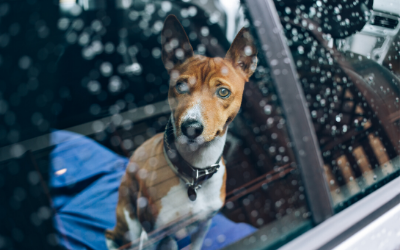
As we grapple with the ongoing COVID-19 pandemic, we must also remain mindful about other emergency situations that could occur over the next few months. Floods, wildfires, tornadoes, and hurricanes are possible scenarios we face as we move through the spring flood season and into wildfire and the Atlantic hurricane seasons.
This Saturday is National Animal Preparedness Day—a day set aside to remind pet owners of the importance of emergency planning for your pet. There’s no denying it, the safety of our pets lies in our hands. We are responsible for ensuring that we have an emergency plan that includes our pets should a natural disaster occur.
First and foremost, if you must evacuate your home during an emergency, take your pet with you. Never leave your pet behind thinking that you may be able to return later to retrieve him or her. Once you’ve left your home, there’s no way to know how long evacuation orders may be in place and you may find that you are not able to return for your pet.
Preparing an emergency kit for your family is an important first step—packing supplies for your pet ensures all members of your family will be taken care of during an emergency. There are some other preparations that should be done in addition to preparing a kit, such as:
- Make sure your pet (dogs and cats) is wearing a collar with an ID tag. Make sure the tag has your up-to-date contact information.
- Microchip your pet and register the microchip with the registry. Be sure to update the contact information associated with the microchip if you move or change your phone number.
- Purchase a pet carrier if you don’t have one. Transporting and housing your pet will be much easier if he or she is in the safety of a sturdy carrier.
- Prepare a plan and pack an emergency kit!
The following are items to have packed in a pet emergency kit:
- Keep 3-7 days’ worth of dry food or pop-top canned food (or pack a can opener). Rotate out the food every 2 months to keep it fresh.
- Have enough water for 3-7 days. Fresh water may be limited or contaminated during an emergency. A large dog will need about a gallon (4 liters) of water a day while small dogs and cats need about 1/4 gallon (1 liter). Rotate out the water every few months to keep it fresh.
- Food and water dishes. Collapsible dishes are best and easy to pack.
- Waste supplies. If you have a cat, pack a litterbox, litter, litter scooper, and garbage bags. If you have a dog, be sure you have ample pet waste bags. Pack paper towels, wipes, and hand sanitizer to prevent contamination with pet waste.
- Keep a supply of your pet’s medication in your pet’s emergency kit. Swap out medication frequently so that medication is not expired. Speak to your veterinarian about keeping extra medication on hand in case of an emergency.
- Towel, blanket, sheet. A sheet can be used to cover your pet’s carrier if you are in an evacuation center and can reduce the visual stimulation, helping to calm your pet. A familiar blanket or towel to sleep on can also help keep your pet calm. Rotate these items in the kit so they remain familiar to your pet.
- Pack toys that you know your pet enjoys playing with, such as a Kong, feather wand, or treat dispensing toys.
- Brush or comb. Be sure to pack a brush or comb. The last thing your pet needs is a large mat or hot spot.
- Record your pet’s microchip number, tattoo, and license number and keep it in your emergency kit. Keep copies of any other important medical records in your pet’s emergency kit.
Take a moment this weekend to prepare or update your pet’s emergency kit with everything that your pet will need in an emergency. One thing that COVID-19 has taught us is to be prepared—hopefully we will see a quiet, emergency-free spring, summer, and fall this year—but it truly is best to be prepared!